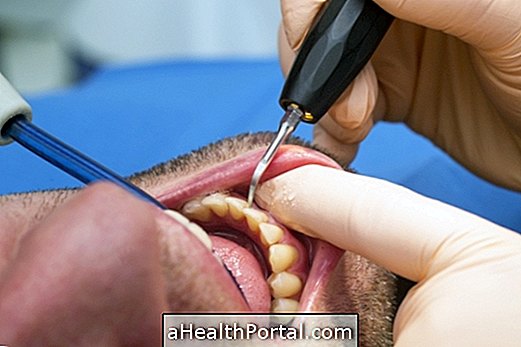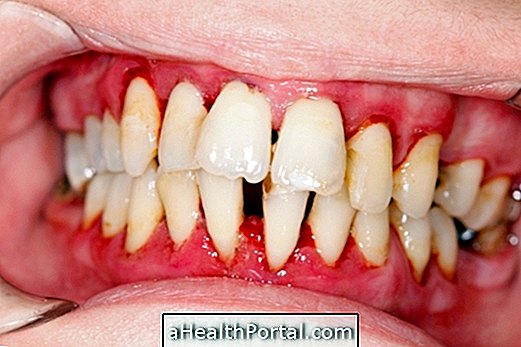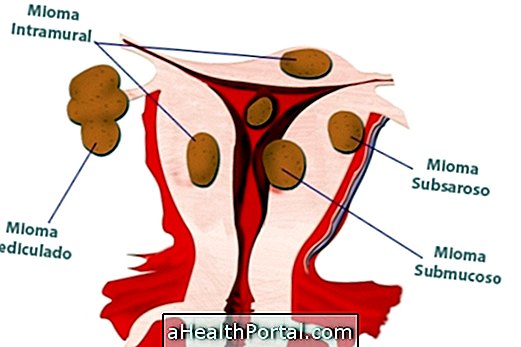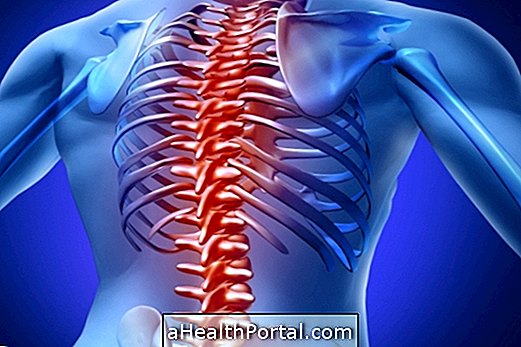The dental implant is a procedure that consists of fixing a pin in the jaw to serve as support for the placement of a tooth, being indicated in cases where the person has lost one or more teeth due to cavities, periodontitis or infections, for example.
This procedure is done under local anesthesia so that the incision in the gums and the fixation on the bone is not felt. In addition, after the procedure, the dentist may recommend the use of anti-inflammatory drugs, antibiotics and analgesics to promote recovery and decrease the pain that can be felt.

When is indicated
The dental implant can be indicated by the dentist when the person has lost one or more teeth or when they need a complete oral rehabilitation, due to infections, deep cavities, accidents or periodontal diseases. Thus, the placement of implants can be recommended to improve the smile but also to improve the person's self-esteem.
Although it can often be related to aesthetics, the placement of the dental implant can also be important to improve chewing, speech and in the treatment of pain in the temporomandibular joint (TMJ).
How is done
The dental implant must be done in the dentist's office under local anesthesia. Before performing the placement of the implant, the dentist may request some tests that allow a better view of the location of the teeth, the quality and bone structure and which teeth should be replaced.
After this initial evaluation, the dental implantation process can begin, in which the dentist performs the person's complete oral hygiene, applies anesthetic to the place where the procedure will be performed, excises any teeth, if necessary, and makes a cut in the gum so that it is possible to have contact with the bone that will serve as the base for the implant. Then, a small hole is made in the bone to correctly fit the pin that will support the tooth and, thus, it will be possible to succeed in the implant.
In the traditional dental implant, the fitting and adaptation of the tooth to the implant will take, on average, 6 months for the upper teeth and 4 months for the lower teeth. After the procedure, the doctor will indicate painkillers and rest, which may be only 24 hours, but it is important to avoid efforts and do physical activity in the first week. In addition, it is important that after the procedure the person has a light diet and performs oral hygiene normally.
Implant with immediate loading
The dental implant with immediate loading happens when the tooth is placed in the metallic structure right after the surgery. In the traditional dental implant technique, replacement teeth are only placed 3 or 6 months after the fixation of the structure. This time is necessary so that there is greater fixation of the prosthesis with the bone, thus being able to place the crown of the tooth.
In the dental implant technique with immediate loading, the process is faster and aesthetically comfortable for the patient, but this technique has restrictions, mainly related to the location of the implant, the patient's health condition, and the condition of the bone that will receive the implant. .
When the dental implant is not indicated
The placement of a dental implant is not indicated for children and young people who are in the phase of bone growth and people who use drugs for osteoporosis, Paget's disease or who undergo chemotherapy. In such cases, it is best to use dentures instead of the implant.
In addition, dental implant placement is not recommended for people who have high-risk heart problems and untreated diabetes, due to the risk of infection and possible complications.
Was this information helpful?
Yes No
Your opinion is important! Write here how we can improve our text:
Any questions? Click here to be answered.
Email in which you want to receive a reply:
Check the confirmation email we sent you.
Your name:
Reason for visit:
--- Choose your reason --- DiseaseLive betterHelp another personGain knowledge
Are you a health professional?
NoMedicalPharmaceuticalsNurseNutritionistBiomedicalPhysiotherapistBeauticianOther
























